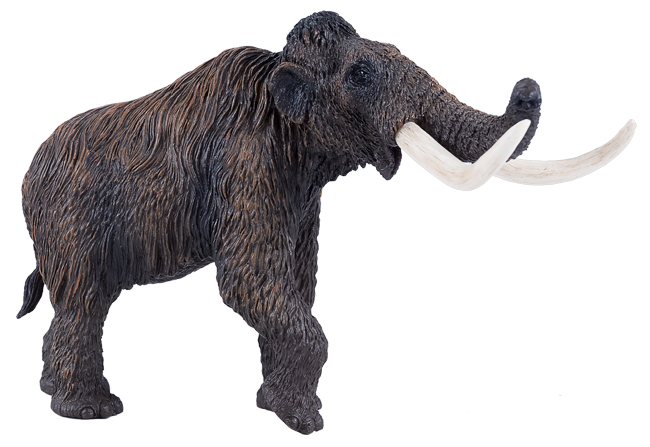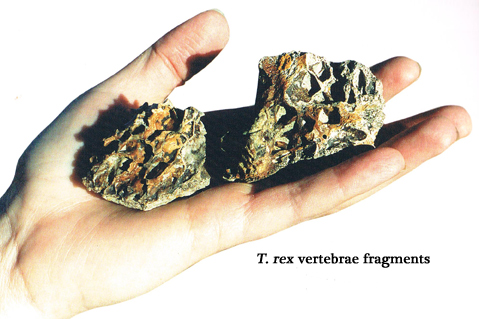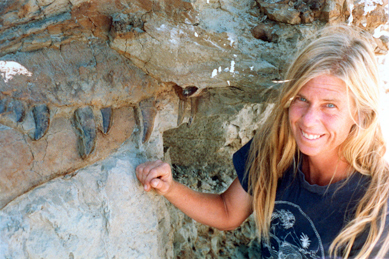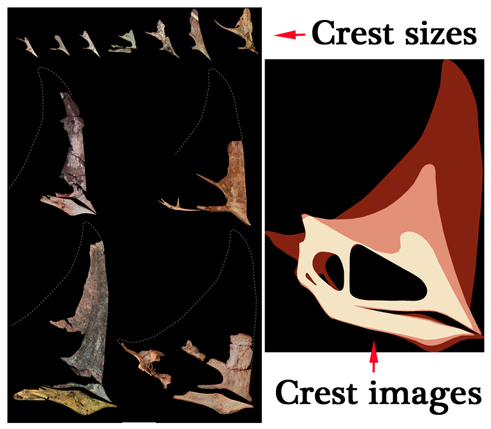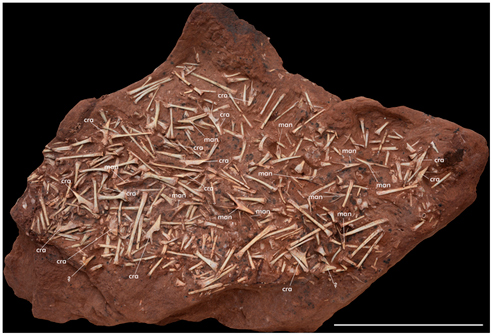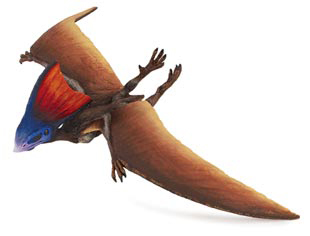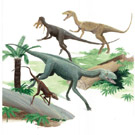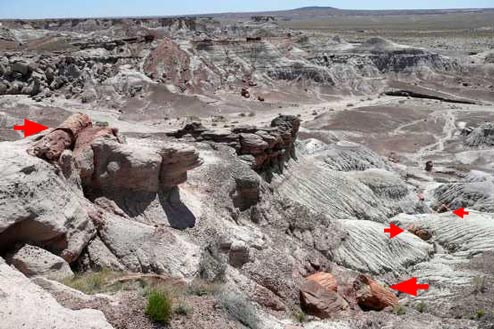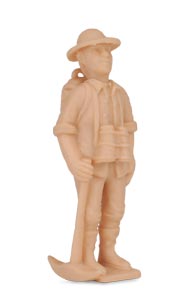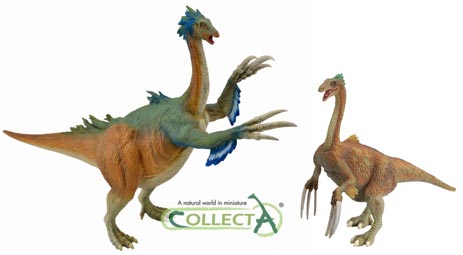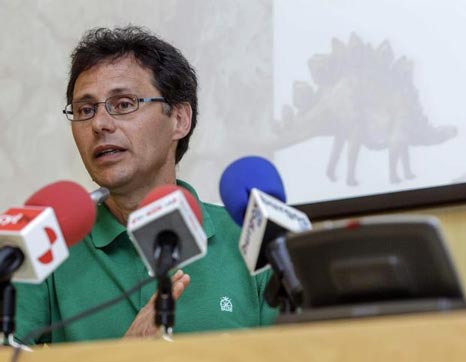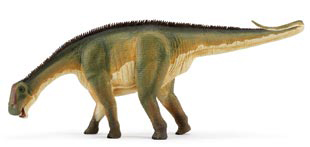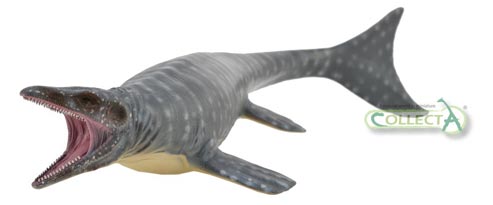Notes on the Newly Described Dinosaur – Laquintasaura
Over the last day or so, the popular science media has carried a vast array of articles detailing the discovery of a new type of dinosaur from the continent of South America. There have been radio interviews with some of the scientists behind the academic paper, news reports and of course, a number of video news stories too. The great majority of the press outpourings have been excellent. The naming of a new dinosaur is a big story, the general public seems to have an ever-lasting fascination with these ancient animals.
Palaeontologists and science editors far cleverer than ourselves have provided a comprehensive overview of Laquintasaura venezuelae, so rather than dwell on describing this animal, we at Everything Dinosaur will try to place this dinosaur discovery in context and cover some of the issues raised in the scientific paper that were not necessarily picked up by the general media.
The Illustration of the Newly Named Dinosaur L. venezuelae
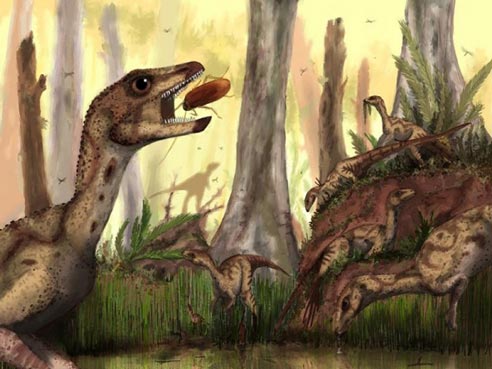
Small, Early Jurassic, bird-hipped dinosaur.
Picture credit: Mark Witton/Natural History Museum
Why Saura and Not Saurus?
First of all, let’s deal with the name Laquintasaura venezuelae. The fossil material (and there is lots of it), comes from a single bone bed located at a dig site which is effectively a road cutting between the two small towns of Seboruco and La Grita in Táchira State, western Venezuela, just a few miles from the border with Columbia.
The horizon from which the fossils were excavated form part of the La Quinta Formation, which outcrops in western Venezuela and eastern Columbia. So the name is pronounced La-quin-tah-sore-rah ven-ee-zway-lay and it translates as “Venezuela’s lizard from the La Quinta”, but note the ending of the genus, it is “saura” and not the much more common “saurus”, what’s going on here?
Saura is the female form of the Greek word saurus, it still means lizard and a number of dinosaurs have been given genus names which take the female form of saurus, examples are the likes of Maiasaura (means “good mother lizard”), or the small Cretaceous ornithopod Leallynasaura which was named after the daughter of the discoverer. There is nothing particularly feminine about Laquintasaura, it is very likely that the bone bed represents the remains of both males and females, in this case, we think the name has come about as the rock formation “La Quinta” has a female root.
Early Jurassic – So What?
The majority of the rocks that make up the La Quinta Formation are sandstones, accurately dating these rocks is made all the more difficult due to the lack of marine deposits and the more abundant zonal fossils that help to date them. However, the scientists involved in this study have been able to date the age of the fossils with a very high degree of confidence. Zircon crystals found very close to the fossilised bones permitted highly accurate radiometric dating techniques to be applied. Essentially, these crystals are abraded by acids, cooked at very high temperatures and then the proportion of uranium isotopes is measured.
Radioactive elements such as uranium begin to decay from the moment they are formed. They decay and form “daughter” isotopes by shedding electrons at a consistent, regular rate. By measuring the proportion of isotopes in these minute zircon crystals the rock formation can be accurately dated. The fossils of Laquintasaura are 200.91 million years old, plus or minus half a million years or so.
Very few dinosaur fossils have been found that can be dated so accurately to this period in Earth’s history. The vast majority of the dinosaur fossils that have been dated to around 200 million years or so, are lizard-hipped dinosaurs (saurischians), Laquintasaura is a member of that other group of dinosaurs, the bird-hipped dinosaurs (Ornithischia).
Photographs of Some of the Fossil Material and Outline Body Shape
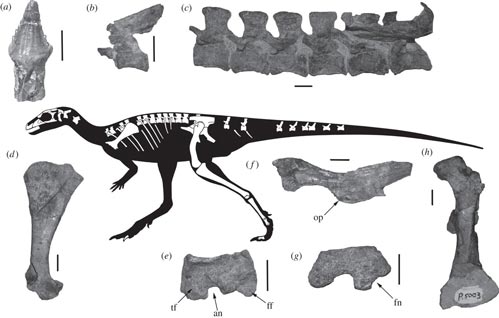
Abundant fossil finds.
Picture credit: Proceedings of the Royal Society B.
What’s so Special about Laquintasaura?
The picture above shows an outline of the body shape of Laquintasaura. It was estimated to be about a metre long, but half of its body length was made up of the tail. It was lightly built and probably a fast runner, roughly the size of a common Red Fox (Vulpes vulpes). The drawing also indicates the sort of fossil material that has been found. Most of the fossils are isolated teeth, or represent bones from the hip area or fragments of rib. However, other fossils representing parts of the skull, the limb bones and vertebrae have also been found but these elements are much rarer. The fossils represent the remains of at least four individuals, but probably many more.
Key to the Picture
- (a) Triangular cheek tooth
- (b) Neck bones
- (c) Dorsal vertebrae
- (d) Left shoulder blade
- (e) Part of the ankle bone
- (f) Left ischium (bone from the hip)
- (g and h) Views of the femur
This is the first early ornithischian bone bed containing the bones of a number of individual dinosaurs found anywhere in the world. Studies of the bones suggest that the fossils represent a group of animals that ranged from about three years to twelve years of age.
Although the bones are jumbled up, they do not show any obvious signs of having been transported a long distance perhaps by a river in spate. Palaeontologists interpreting this fossil deposit have suggested that this bone bed was not formed over a long period, where single dinosaur carcases were deposited in the same location as a result of seasonal, violent floods.
The fossils seem to have been transported and deposited in a low-energy water environment, perhaps a slow moving river and it has been suggested that this group of dinosaurs died in a single catastrophe. It is unclear whether they all died as a result of becoming stuck in the water, or whether the water transport occurred after death. This suggests that this was a social group, a small herd or a flock if you prefer.
Most palaeontologists are confident that later ornithischians, the likes of the iguanodonts, duck-billed dinosaurs and the horned dinosaurs lived in herds. If Laquintasaura is a social, bird-hipped dinosaur, then these fossils have provided the earliest known evidence for the evolution of complex social groups in the Ornithischia. This social behaviour in ornithischian dinosaurs is being seen around fifty million years earlier than previously thought.
Weird Teeth
The teeth are unlike any other teeth associated with ornithischian dinosaurs. They are quite prominent, and although triangular in shape, the edges are curved and slightly concave in appearance. The edges of the crown (the tooth that sticks out of the gum) are coarsely serrated. This suggests that this little dinosaur was most probably a herbivore eating tough ferns and horsetails. It probably also grabbed at passing insects or small reptiles from time to time, hence the bug eating Laquintasaura depicted in Mark Witton’s excellent illustration (see above).
A Close up of One of the Teeth of Laquintasaura (various views)
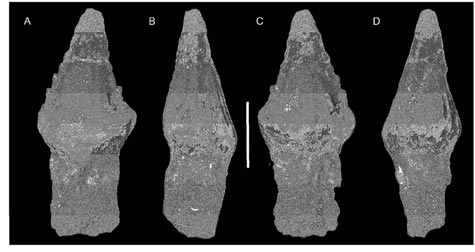
Strange teeth indicate herbivorous habit.
Picture credit: Barrett et al, Proceedings of the Royal Society B.
Venezuela’s First Dinosaur – Dinosaurs Thrived Around the Equator
Much has been made of the fact that this is the first dinosaur ever to be discovered in Venezuela. Indeed, this is the first dinosaur to be named and described from the northern portion of South America. Two hundred million years ago, Venezuela formed part of the central portion of the giant super-continent Pangaea. Laquintasaura seems to have thrived in a habitat close to the equator in the centre of this huge land mass. Very few dinosaur fossils have been found in what is termed the palaeoequatorial region.
It had been thought that much of this part of the world in the Late Triassic/Early Jurassic was too hot and dry to support extensive, complex ecosystems. Much of this area was thought to have been covered by vast, inhospitable deserts. However, the finding of the fossils of Laquintasaura suggests that dinosaurs and most likely other types of vertebrate did live in these regions.
The Location of the Laquintasaura Fossils (Palaeoequatorial Environment)
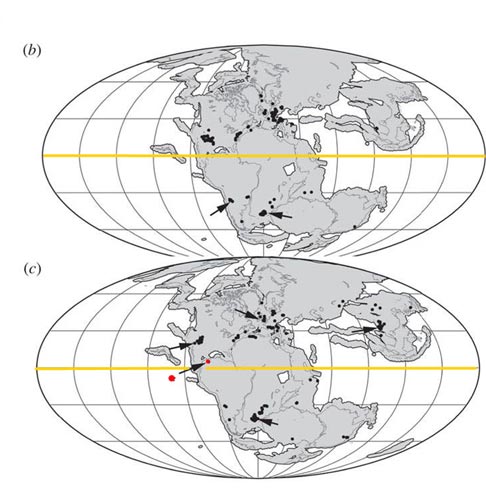
Spatial distribution of early bird-hipped dinosaurs.
Picture credit: Proceedings of the Royal Society B.
The diagram (b) shows the location of dinosaur fossil finds mapped onto a picture of the world from the Late Triassic. The yellow line indicates the position of the equator. Diagram (c) shows the position of dinosaur fossil finds known from the very Early Jurassic. Arrows indicate ornithischian dinosaur finds. Note the scarcity of palaeoequatorial dinosaur finds and the very limited palaeobiogeographical distribution of ornithischians in the Late Triassic and their subsequent spread in the Early Jurassic. The red dot in diagram (c) indicates the site of the Laquintasaura fossils. As these dinosaurs were small, around one metre in length, it is highly unlikely that these dinosaurs could have migrated long distances, this and the fact that the fossil bones show little sign of long distance transport indicates that Laquintasaura lived close to the equator.
The discovery of Laquintasaura suggests that there were ornithischian dinosaurs living close to the equator around 200 million years ago. Their presence (and the discovery of two theropod teeth at the same site), indicates that western Venezuela supported a diverse and flourishing ecosystem.
What Does it Mean for Dinosaur Evolution?
The fossils of Laquintasaura come from just a few hundred thousand years after the end Triassic extinction event. The period of deep time marked by the end of the Triassic experienced a mass extinction event. The type and diversity of terrestrial vertebrates altered dramatically with many kinds of reptile and amphibian becoming extinct.
Palaeontologist Dr Paul Barrett of the Natural History Museum (London) and one of the lead authors of the scientific paper commented:
“Laquintasaura lived very soon after the major extinction at the end of the Triassic Period, 201 million years ago, showing dinosaurs bounced back quickly after this event. It is fascinating and unexpected to see they lived in herds, something we have little evidence of so far in dinosaurs from this time.”
Either the dinosaurs did recover quickly after this extinction event or they were not too badly affected when compared to other vertebrates.
Laquintasaura
In addition, scientists are aware that by the Middle Jurassic, the bird-hipped dinosaurs had begun to diversify into a range of body types. There were the likes of the ancestors of the camptosaurs, heterodontids and the first of the armoured dinosaurs.
This research carried out by the University of Zurich and the Natural History Museum is helping to piece together the origins and the subsequent diversification of this group of the Dinosauria that led them to become the dominant terrestrial herbivores of the Mesozoic.


